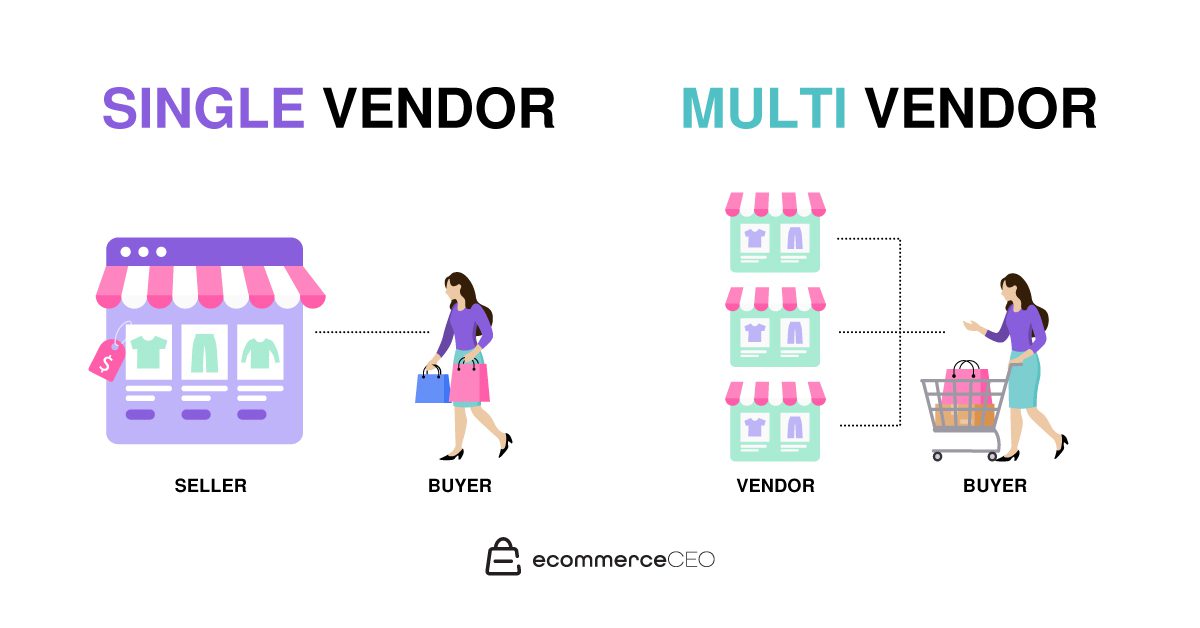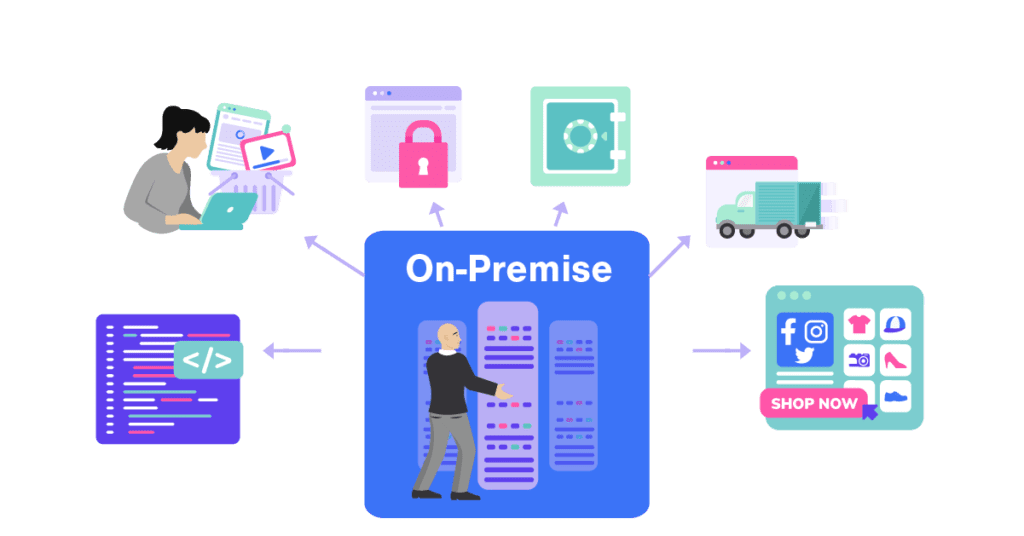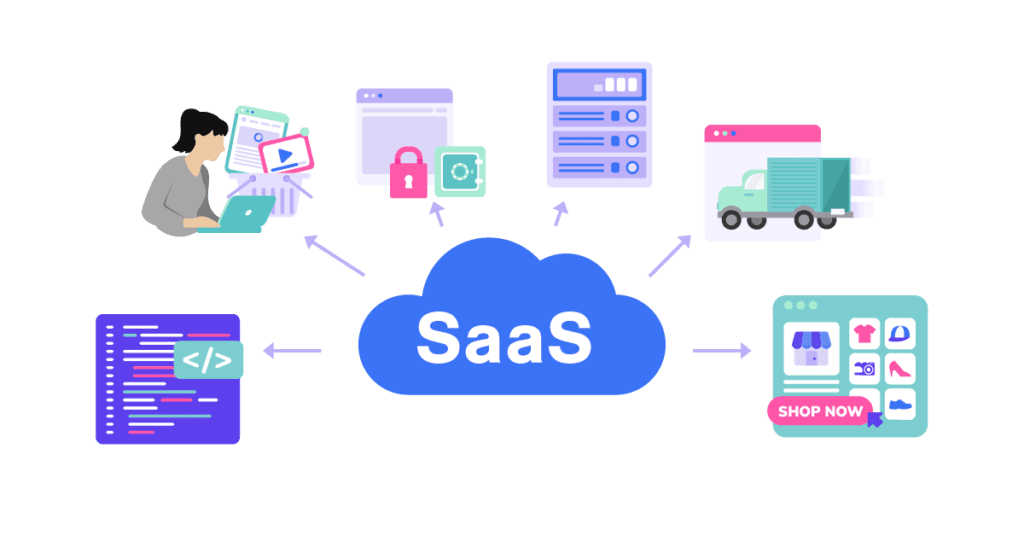In 2024, multi-vendor ecommerce platforms such as Virto, Dokan, Yo!Kart, Sharetribe, Arcadier, and Webkul dominate the market. Newer players like Shipturtle are offering additional value like shipping and logistics to the powerful Shopify platform.
Thanks to these turnkey software solutions, you don’t need to hire a developer to build source code. They include all the basic features and functions of a traditional multi-vendor marketplace, like Amazon, Walmart, Etsy or eBay.

Starting a vendor marketplace allows you to tap into a vast network of suppliers, broadening your product offering without increasing your inventory risk. It also facilitates scalability, offering the chance to grow your business without having the constraints of a traditional ecommerce store.
Plus, you get to provide a one-stop shopping experience to your customers while reaping the benefits of increased site traffic and higher revenue. Here’s a list of the best multivendor ecommerce platforms.
1. Shipturtle: Marketplace Creator
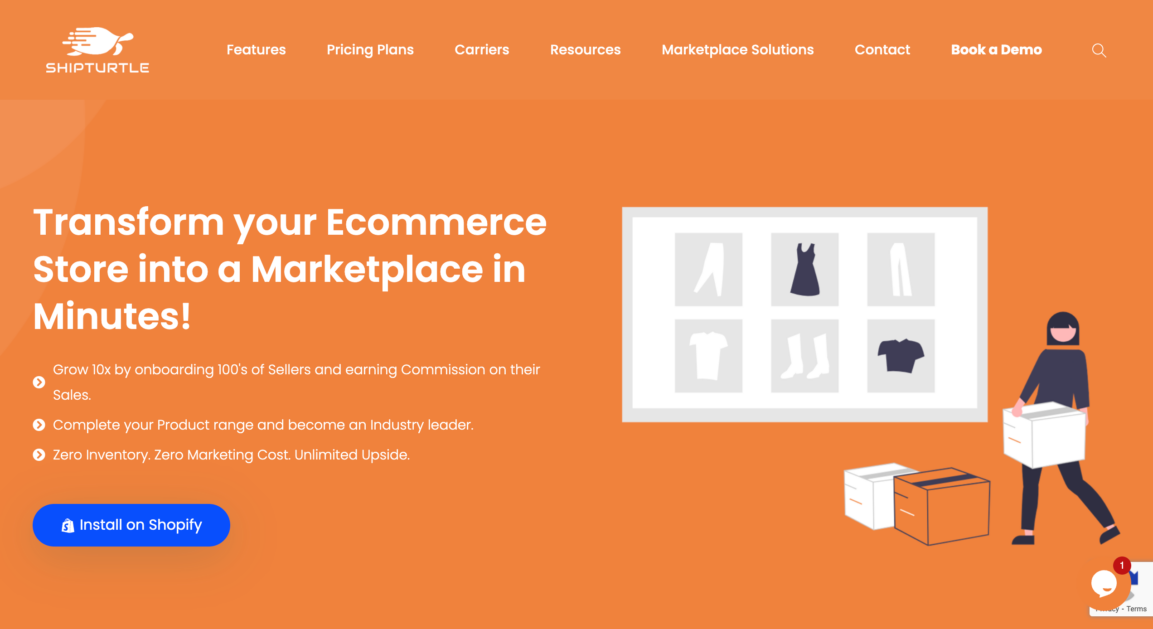
Imagine a single platform that effortlessly manages everything from inventory and order processing to delivery tracking. Shipturtle does precisely that! No more juggling between different systems or worrying about manual errors.
Especially appealing about Shipturtle is its ability to integrate with over 100+ online marketplaces and 200+ shipping partners. No matter the scale of your business operations, Shipturtle can help optimize your operations and boost your online sales. And remember, each pricing plan is backed with round-the-clock support, ensuring your operations run smoothly with minimal hiccups.
Key features:
- Vendor-wise order splitting, routing.
- Vendor Store sync and order push(WooCommerce & Shopify)
- 4-level commission automation.
- Customization/Tailored Solution.
Shipturtle offers two products for Ecommerce brands:
- Shipturtle Marketplace Solution (for brands wanting to build marketplaces) D2C, P2P, B2B.
- Shipturtle Shipping Solution (for brands looking for Shipping integrations)
Pricing plans range from $29 – $149. And they also offer a free 14-day trial.
So, whether you’re an established ecommerce business on Shopify or a newbie planning to scale up, Shipturtle can alleviate operational complexity and streamline your process.
2. Yo!Kart
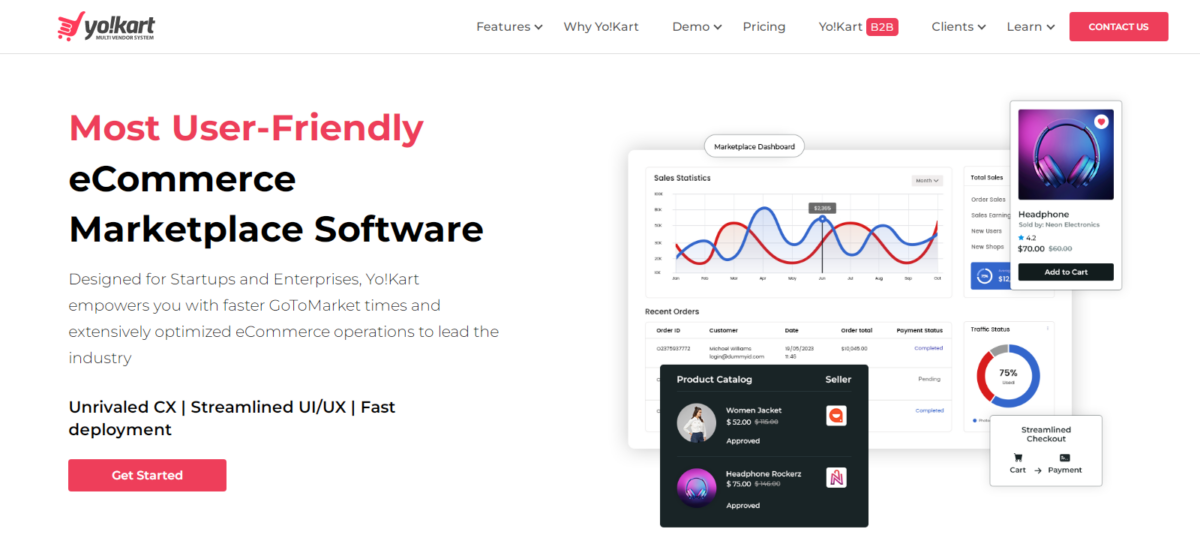
Yo!Kart is a feature-packed platform that can make your multi-vendor marketplace vision a reality. With its robust list of features, you can offer a great shopping experience to customers while easily managing your vendors.
There is no need for any plugins. Moreover, it is self-hosted, so you own the source code, and install it on a server of your choice.
Diving into the pricing structure, Yo!Kart offers different plans for different business scales:
- GoQuick: This plan is priced at $1249, perfect for startups and small businesses
- GoCustom Boost: It costs $2,499 and is comes with additional marketing set up support and 12 months of tech support.
- GoCustom: Costing $6,249, this plan is best for large enterprises with the need of a completely personalized and unique marketplace platform
All plans come with a one-time fee, sparing you of any recurring charges after the setup. Making Yo!Kart a powerful yet cost-effective ecommerce solution.
3. BigCommerce Multi-Store
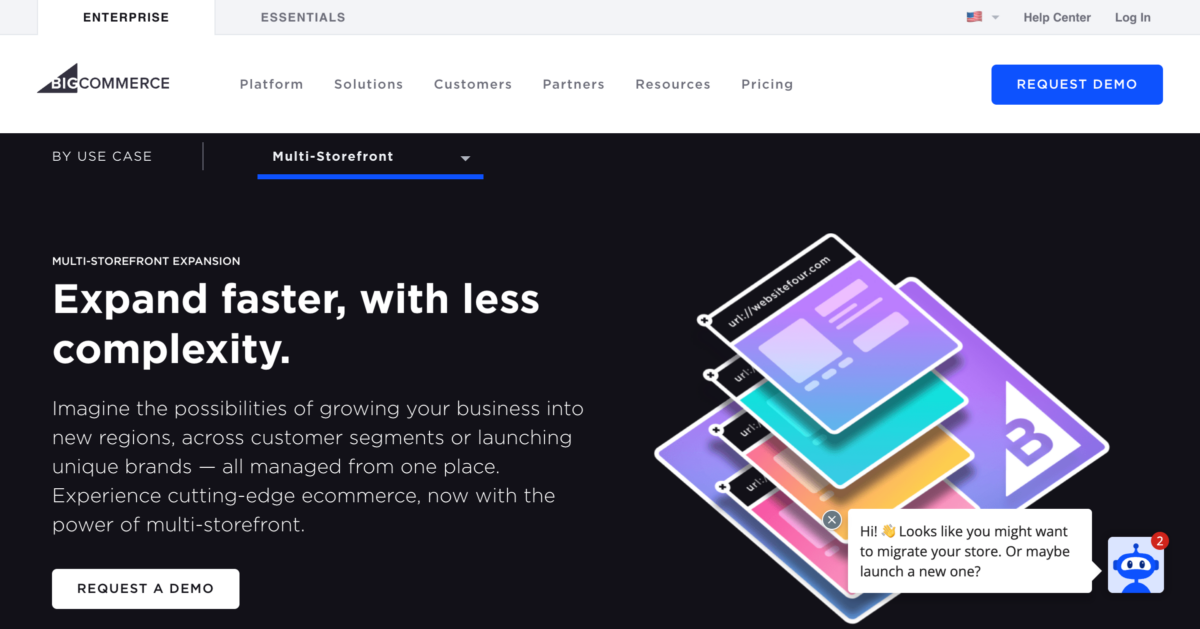
BigCommerce offers excellent options for managing multiple stores under one platform. It’s enriched with a vast array of advanced features suitable for growing businesses. Some of its key multi-vendor features include:
- Centralized Management: Easily manage multiple stores from a single dashboard.
- Global Selling: Expand your business to international markets with multi-currency support.
- Omnichannel Selling: Connect with customers on popular marketplaces and social channels.
- High-Volume Security: Robust protection measures for secure transactions.
- Scalable Infrastructure: Expand your business without worrying about infrastructure constraints.
Be sure to consult the BigCommerce website for the most recent information and for possible custom plans tailored to suit large businesses or high-volume sellers. BigCommerce is a powerhouse of features, making it a worthy consideration for business owners seeking an easy-to-use, scalable solution for their multiple stores.
4. CS-Cart Multi-Vendor
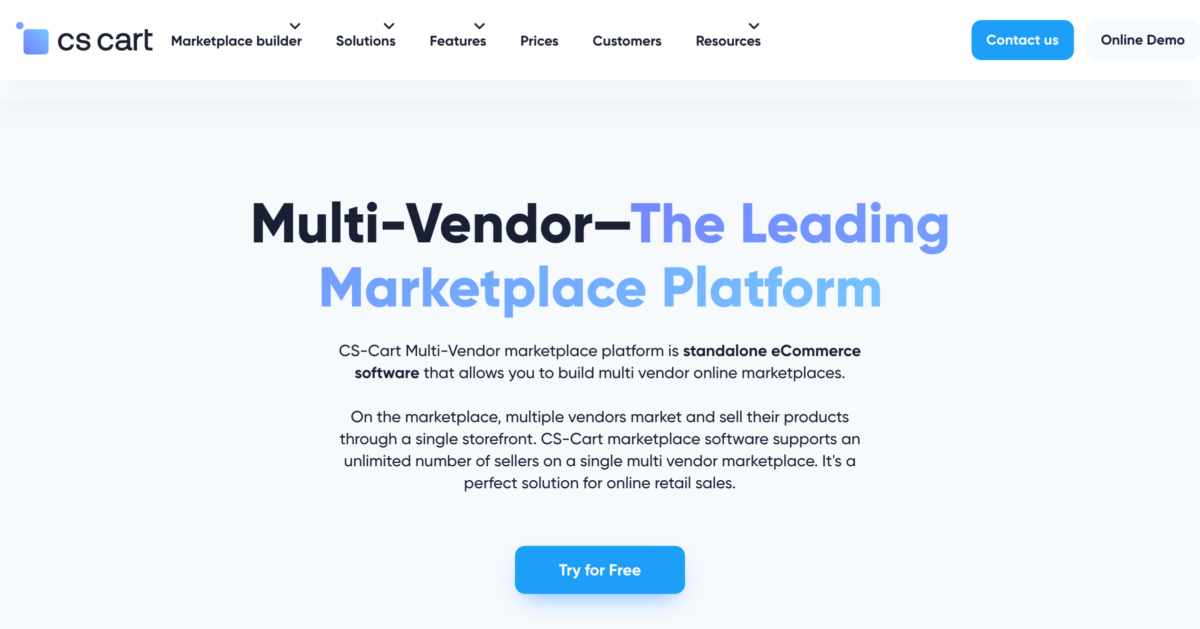
CS-Cart Multi Vendor is a marketplace platform that makes it easy to build your own online mall. More than 1,300 vendors across the world use it. It comes highly rated on platforms like Capterra. It’s worth mentioning that you do not get access to multiple storefronts until you pay for the Ultimate plan or higher.
The one-time fee can be a bit much for businesses just getting started but compared to paying monthly for access to many of the same features, it can be a far better investment in the long run – if you have the technical skills or the budget to hire someone to handle the technology.
All plans come with:
- Lifetime ownership and access to the source code. Enterprise plans get access for the duration of the active subscription.
- 500+ features
- No code UI
- Free bug and security fixes
- 15-day free trial
Pricing:
- Multi-vendor Standard: $1,250 one-time fee
- Multi-vendor Plus: $3,150 one-time fee
- Multi-vendor Ultimate: $6,950 one-time fee
- Enterprise: Custom pricing
5. Virto Commerce

VirtoCommerce powers brands like Volvo, Comcast Xfinity, ProFlowers, Chevron, and HBO. This open-source multi-vendor software offers two editions. The Community Edition is ideal for small to mid-sized businesses, and the Enterprise Edition is what large companies should use.
VirtoCommerce offers a robust feature set, including:
- Strong product catalog and management feature: The platform allows for both physical and digital products. No matter how complex your product list is, you can display the information in a way that’s easy for consumers to understand on the front end.
- Marketing and merchandising tools: Including Upselling and cross-selling. The platform uses machine-based learning algorithms to provide product recommendations that are more advanced than what you may find on other platforms. Cart promotions and banners also make it easy for merchants to offer customers personalized deals.
- Solid Order Management: VitroCommerce Takes order management up a notch since it for both payments and shipments to be split. Merchants can also offer quotes when customers need to be specific about the project. It also includes a subscription management feature for easy recurring income.
- Vendor Permissions: This makes it easy for you as an operator to ensure that all of your merchants are following the rules, While still allowing each individual vendor to customize their own store with themes and a complete vendor management profile.
With no disclosed price on their official website, we suggest you to contact Virto Commerce directly for detailed and customized pricing information.
6. Sharetribe
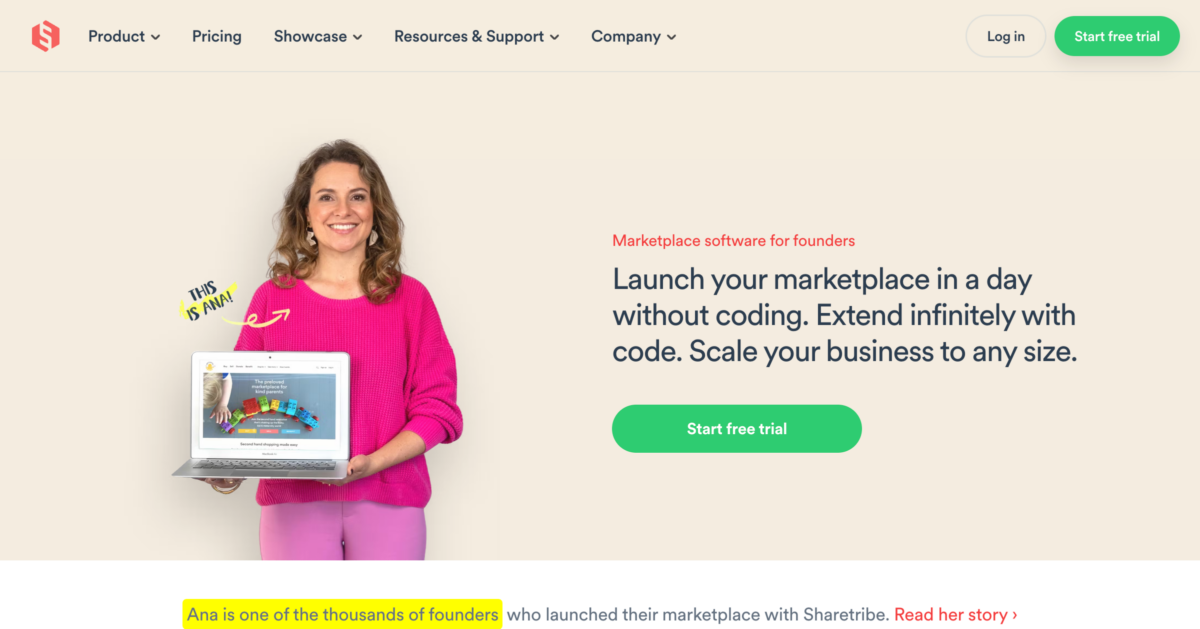
Sharetribe continues to gain popularity with entrepreneurs who wish to launch their online marketplaces. Enabling businesses to create a unique marketplace similar to Etsy or Airbnb, Sharetribe promises simplified operations without the need for extensive website development knowledge.
- A fully customizable online marketplace
- Powerful search and location features
- Secure transactions and automated payouts
- Easy management of listings, vendors and users
Moving on to their pricing, Sharetribe offers four different plans:
- Build: $29/month – This entry-level option provides basic marketplace capabilities and includes all standard features. This plan is suitable for small startups or personal projects.
- Onboard: $99/month – Sharetribe extends its offering with this plan, providing features like availability calendar, customizable transaction process, and promotional code system. It’s perfect for growing businesses.
- Launch: $199/month – with launch you’ll be able to accept payments with Stripe and integrate with other platforms.
- Exdend: $299/month – The premium plan targets high-volume businesses with increased customer support, multiple admin seats and advanced analytics. It’s designed to fuel business expansion.
The pricing is tiered so that businesses of all sizes can find an option that suits their needs and budget.
7. Vendo By Spree

Vendo might just be the solution for you. It’s equipped with some of the most pioneering features designed to enhance the operation of such platforms.
- Automated vendor payouts
- Vendor dashboard, allowing vendors to effectively manage their products and orders
- Promotion and discount code management
- Email notifications for various activities within the platform
- Smooth product management with CSV import, export functionality and more
As for pricing, Vendo prefers to provide a personalized plan based on your unique needs. Therefore, direct quotes are not available on their website. The primary plans, Basic and Pro, vary based on features available, with the Pro Plan including additional elements like advanced SEO tools and full customization features. However, for precise information, you will need to connect with Vendo’s sales team.
All in all, the versatility in customization and strong features make Vendo a reliable option. Remember to connect directly for concrete pricing information based on your specific eCommerce needs. This ensures you get a package tailored to your requirements, for the right price.
8. Acardier Express
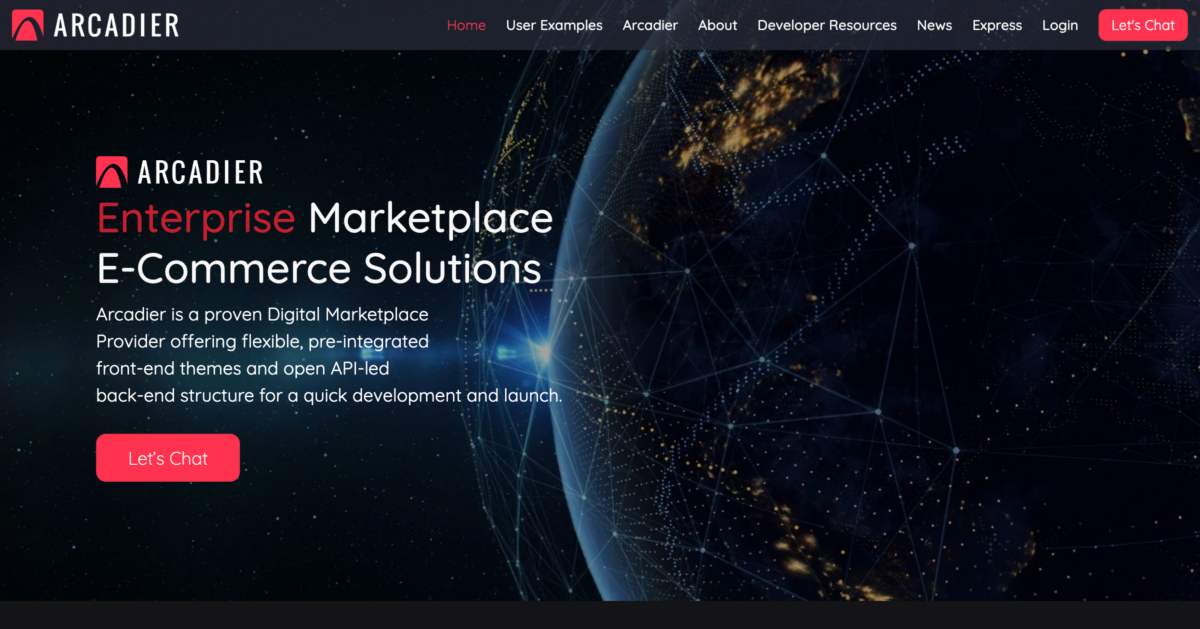
Arcadier may be advertised as a no-coding platform, but if you purchase the enterprise package, you can customize it completely. The Enterprise package allows you to bring your own developers, or choose one of Acardier’s partners to work with.
- Customizable marketplace themes
- Integrated payment gateways
- In-depth analytics
- Email notifications and reminders
Now, let’s cut to the chase and talk about pricing. Arcadier Express offers three distinct pricing tiers:
- Standard: Billed at $100/month, it comes with premium features, such as CSV bulk upload and email support.
- Plus: Bestowed with an array of sophisticated features, the Plus plan requires a monthly investment of $200, assuring customers with assisted implementation support and no transaction fee.
If you are looking for information on a customized plan, it would be a good idea to reach out directly to Arcadier customer service. In a nutshell, Arcadier Express serves as a comprehensive and cost-effective solution designed for creating and managing your ecommerce marketplace.
9. X-Cart Multi-Vendor
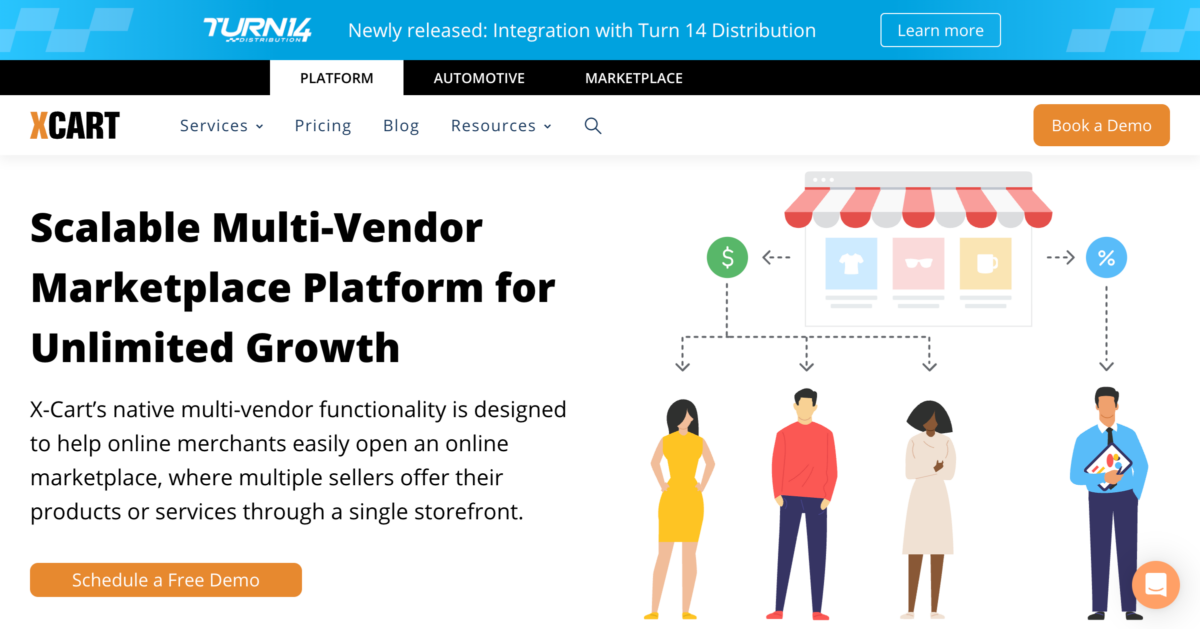
X-Cart Multi-Vendor is designed to support any business model, from online shopping malls with physical products to digital downloadable products, B2B and wholesale, online and offline services, rental and booking systems, and C2C.
While X-Cart pricing starts at $199/month, you’ll need to invest in the Marketplace plan, which starts at $399/month if you want to have a multi vendor platform. To get started, you have to schedule a demo.
Unfortunately, if you’re seeking something more customized to your needs, you’ll have to reach out to X-Cart directly for pricing as they do offer tailored solutions but do not publish prices. A powerhouse in its own right, X-Cart Multi-Vendor masterfully merges affordability and functionality in its offerings.
10. IXXOCart
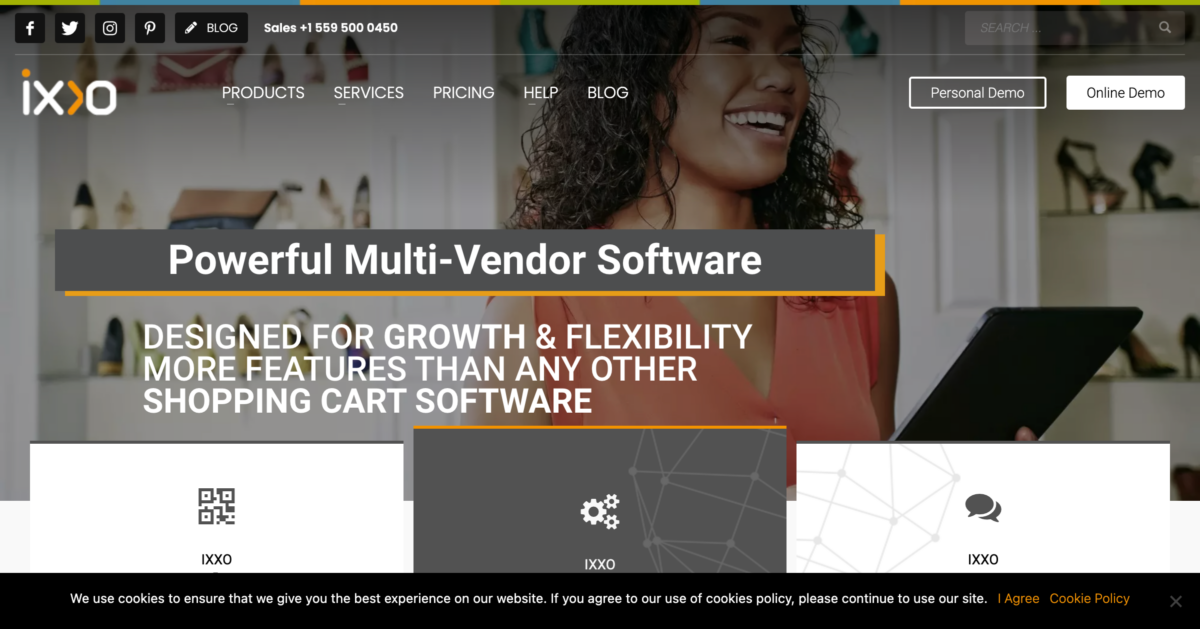
IXXOCart Multi-Vendor offers over 1,000 built-in ecommerce features. It makes it easy for your vendors to personalize their stores but keep them consistent with your overall marketplace design.
- Unlimited Vendors – an opportunity to expand your marketplace indefinitely.
- Different Commission Rates – optimizes revenue by permitting different rates for diverse vendors.
- Vendor Profiles & Reviews – build a trusted marketplace through transparency and accountability.
- Separate Vendor Admin Panel – ensures data integrity with individual interfaces for the vendors.
- Integrated Payment Gateways – supports a host of common gateways for flexible transactions.
As for the pricing, IXXO Cart offers three purposefully differentiated plans:
- Classic Plan – At $1495, it offers single domain support and all core features.
- Business Plan – Priced at $2795, it encompasses additional professional services and priority support.
- Enterprise Plan – Contact for pricing; this brings additional VIP support and unlimited users.
11. Dokan
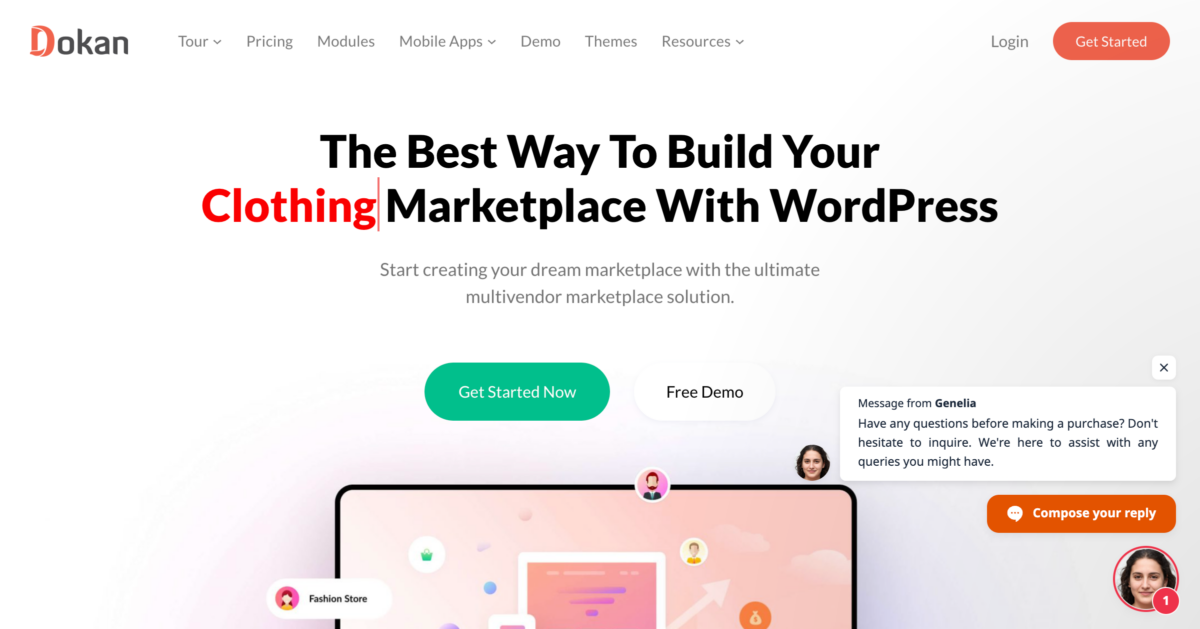
Dokan is known for its user-friendly dashboard, making it easy for vendors to manage their WordPress stores independently. This platform offers multiple product types, customizable store layouts, and personalized URLs, among other features. One remarkable feature is its free plan which includes unlimited vendors.
Let’s have a look at Dokan’s pricing tiers:
- Starter Plan ($149/year): enables you to manage up to 1 domain, offers a frontend dashboard, vendor withdrawal, order management, and other basic ecommerce features.
- Professional Plan ($249/year): up to 3 domains, and includes features such as vendor reviews and storefronts, alongside maximum product limit, while also offering email support.
- Business Plan ($499/year): allows up to 5 domains, and includes priority support, alongside features like product subscription and export-import.
- Enterprise Plan ($999/year): 20 domains, it includes all Business Plan features and guarantees the fastest response time for queries.
12. Webkul
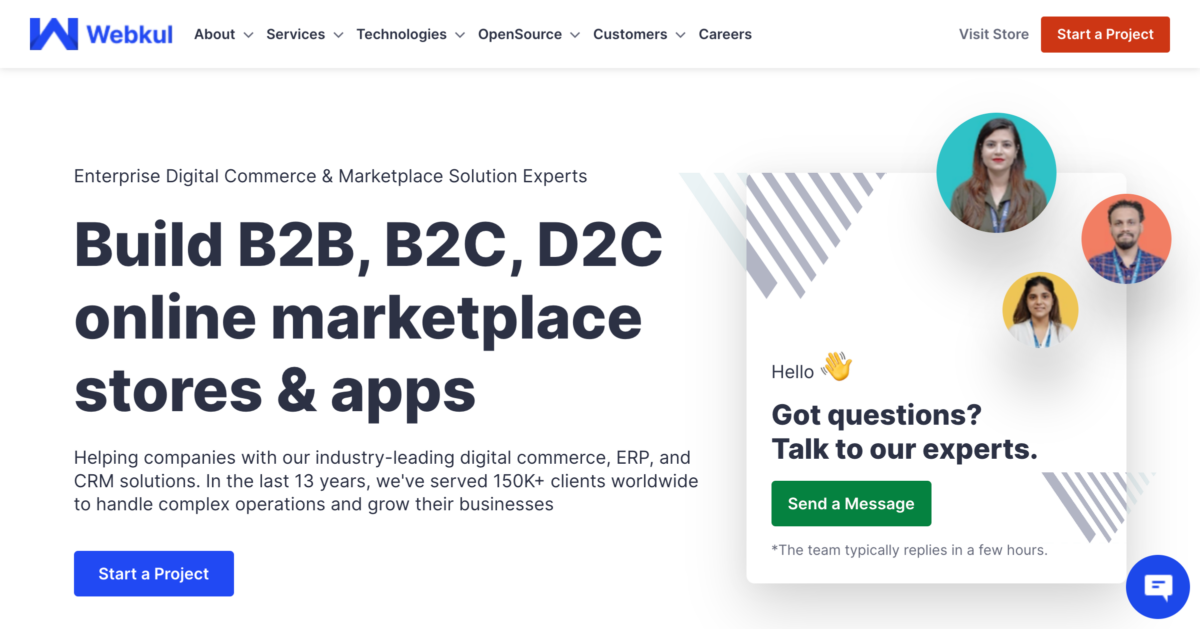
Webkul stands out for its expansive versatility and flexibility in the ecommerce realm. Not only does it offer top-notch ecommerce apps for popular platforms such as Shopify, Magento, and Bigcommerce, but it also can satisfy your needs of a custom-built marketplace with their comprehensive full service.
Webkul offers a host of impressive features. Think of it as a sturdy bridge connecting vendors and buyers, all while facilitating smooth transactions, effective vendor management, and seamless product display. Additionally, it’s not limited to the retail sector; Webkul caters to a range of industries, boasting versatile applications.
13. ZielCommerce
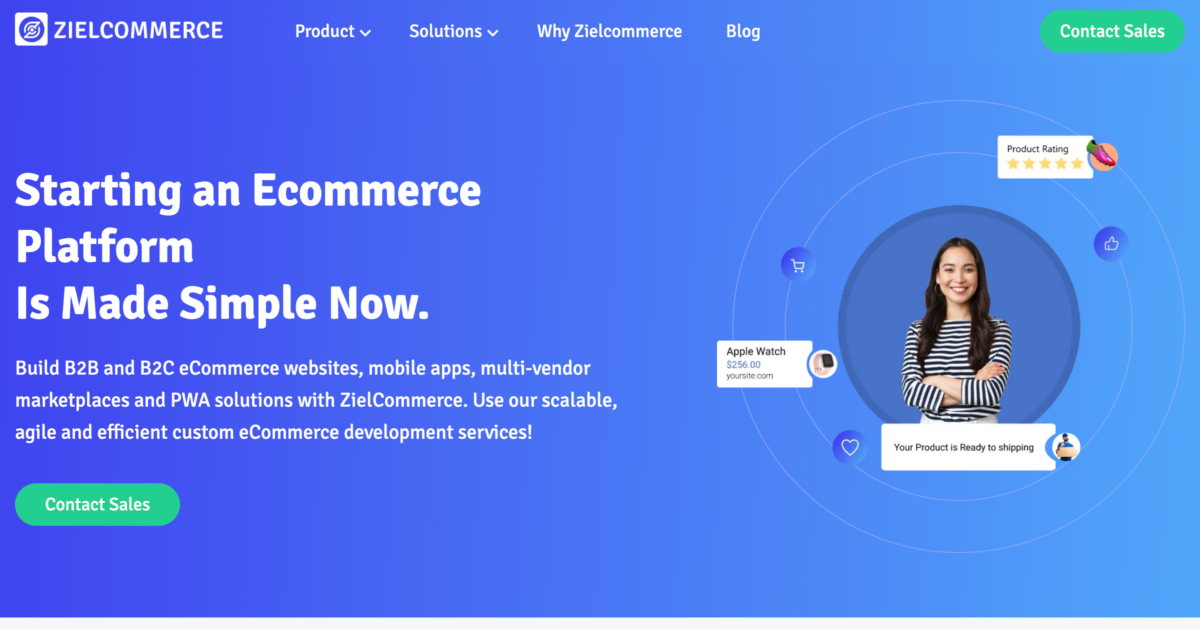
If you’re exploring versatile multi-vendor platforms, you’ve likely stumbled upon Zielcommerce. A standout platform in the market, ZielCommerce packs in an impressive collection of features for merchandisers and admins.
Want to set up different pricing methods, adjust shipping methods, or have specific policies for each seller? ZielCommerce can handle it all! The platform offers end-to-end customization, allowing you ample space to tailor your marketplace. The user interface is easy on the eyes and the navigation process is fluid, which, let’s admit it, is an added advantage in the competitive ecommerce scene.
14. Laraship Marketplace
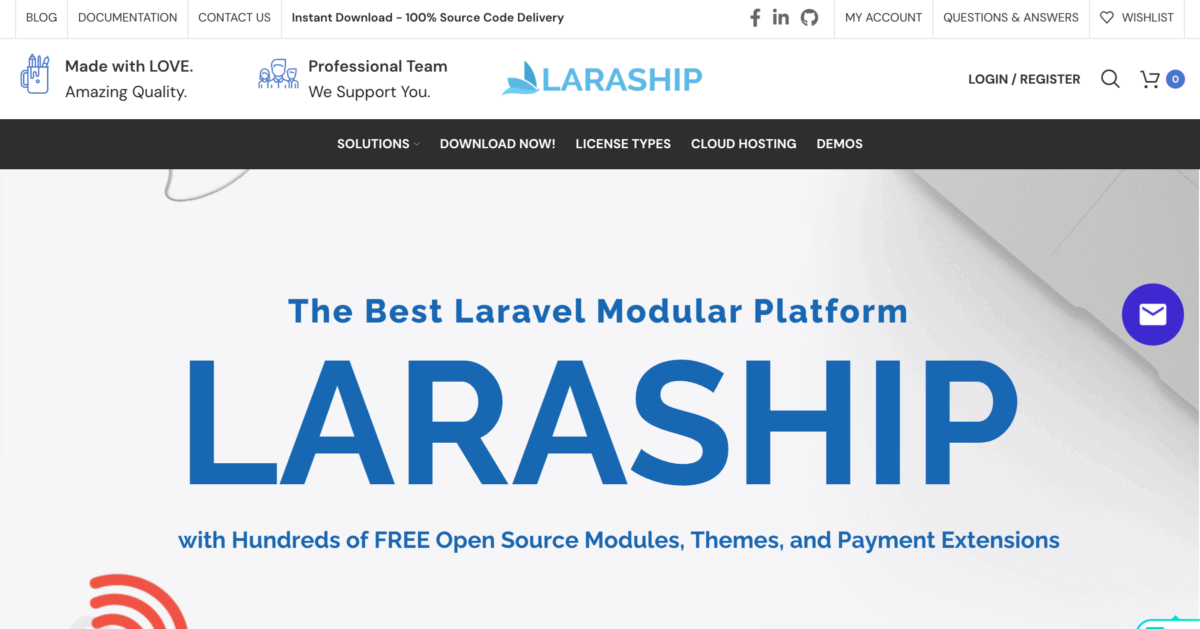
How about we switch gears and talk about Laraship Marketplace? This powerful Laravel-based platform is a force to be reckoned with when you consider its pricing.
- Standard: $299
- Extended: $499
- MultiTenant: $1499
Laraship takes away the complexities of building a marketplace solution by providing a solid foundation that speeds up your market launch. It has multiple built-in modules, such as subscriptions, eCommerce, and classifieds. Furthermore, its standout feature is its ability to handle subscriptions and one-time product sales within the same platform. Don’t you just love when things are made easier for you?
If you’re a stickler for design, you’ll appreciate Laraship’s fully responsive and customizable themes. Plus, its SEO-friendly URLs will certainly give you a leg up in the online visibility race. Ready to take your marketplace to the next level? Laraship is certainly worth considering.
15. Mirakl
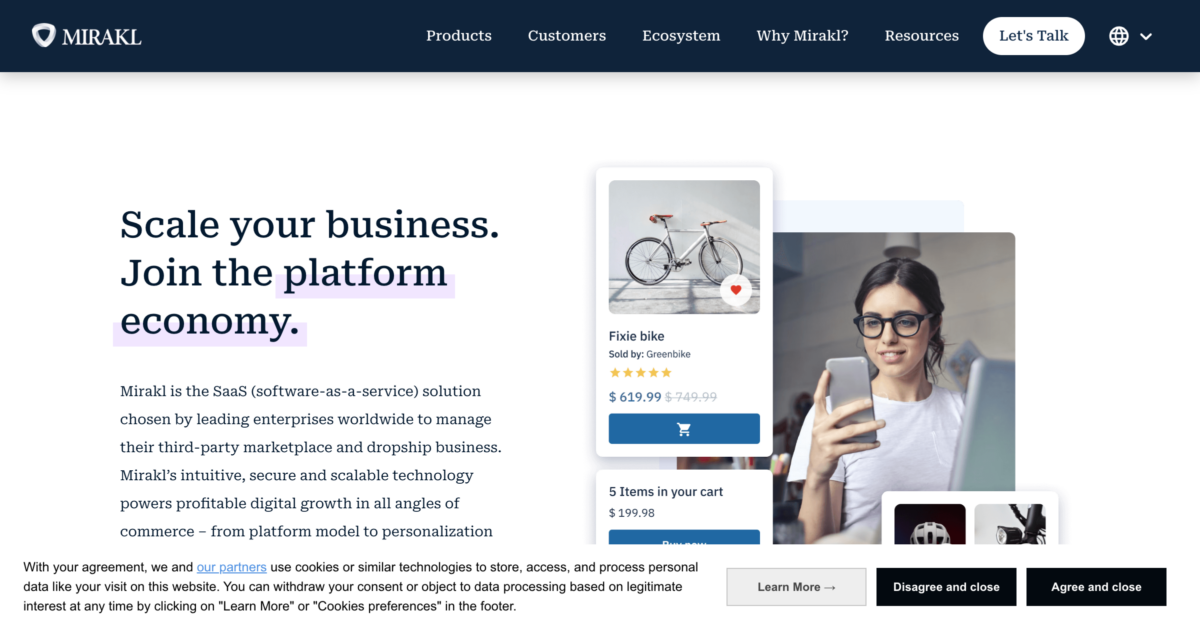
Lastly, we mustn’t forget about the entrepreneurial powerhouse that is Mirakl. This platform truly understands the intricacies of marketplace vendors, making it a favorite among many businesses.
Mirakl empowers you to launch and grow a successful marketplace with its sophisticated yet user-friendly technology. It offers a seamless experience, efficient management tools, automated end-to-end processes and integrations. All this is designed to help you remain focused on your strategic goals.
With Mirakl offering features like catalog management, order management, and seller performance tracking at its core, you can’t help but realize that this is a platform built for growth. Its extensive support network and robust nature make sure your marketplace continues to thrive in the evolving ecommerce landscape.
FAQs
Ready To Become a Marketplace Owner?
Whatever the nature of your online vendor store business or the revenue models you aim to adopt, choosing the correct ecommerce marketplace platform is the stepping stone to success.
Most popular ecommerce platforms like Shopify, WooCommerce, and Adobe Commerce have multivendor capabilities, but they will need an app (like Webkul or Dokan) or extension to get the job done.
Understanding your business needs should be a critical aspect of your ecommerce solution.

